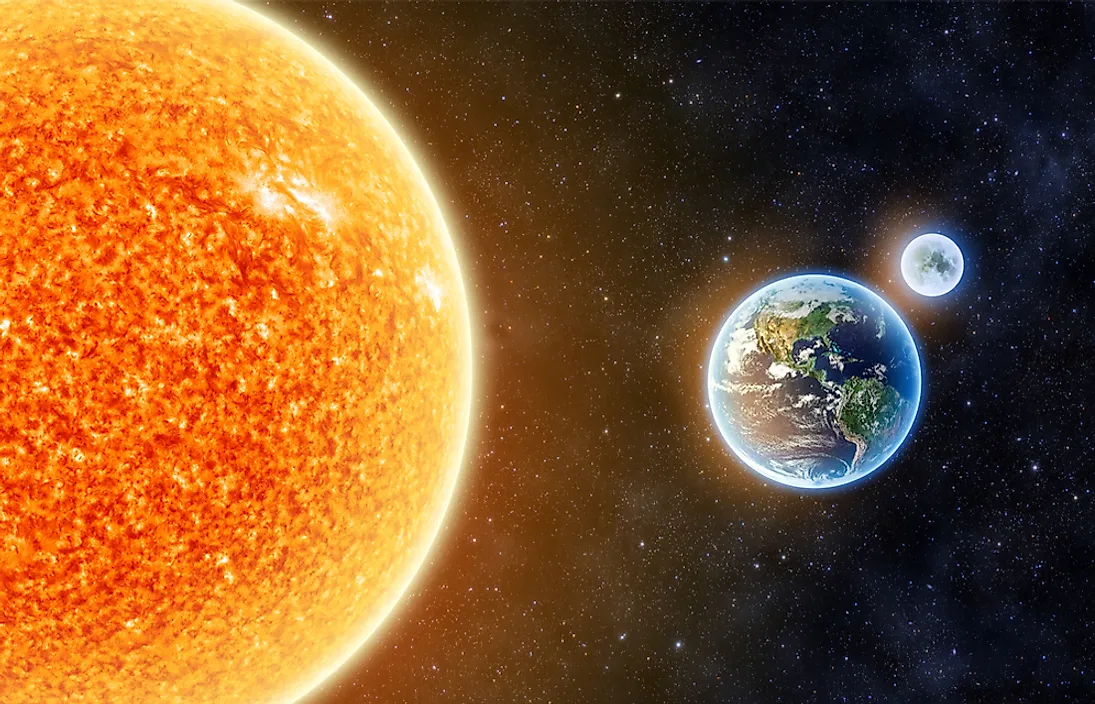How Far Is the Earth from the Sun?

The Sun is located at the center of the solar system, and the other bodies such as planets, asteroids, and comets revolve around it. Earth, as one of the planets, also revolves around the Sun. The distance between the Earth and the Sun is referred to as astronomical unit (au), which is also a unit for measuring other distances throughout the solar system. The au averages 149.6 million kilometers or 92.96 million miles. The distance between the Earth and the Sun is so great that the light from the Sun takes about eight minutes to hit the Earth’s surface, traveling at 186,000 miles per second.
Elliptical Orbit of the Earth
The au is not the exact distance, but the average distance between the Earth and the Sun, meaning the distance may sometimes vary. The Earth, like most of the planets, revolves around the Sun, with a complete revolution taking 365.25 days. However, the Earth does not move round the Sun in a perfect circle. The orbit of the Earth is elliptical or oval in shape, or like a stretched circle, with the Sun roughly at the center of the orbit. At different times of the year, the Earth either moves closer or farther away from the Sun. At perihelion, the Earth’s closest distance to the Sun, the distance between the Sun and the Earth is 91.4 million miles. The Earth is closest to the Sun in early January. At aphelion, when the Earth is furthest to the Sun, the distance between them is about 94.5 million miles. The Earth is furthest from the Sun in early July.
Historical Estimations of the Distance
Greek astronomer Aristarchus became the first person to obtain the distance between the Sun and the Earth in 250 BC. In 1653, Christiaan Huygens estimated the distance to the Sun by using the phase of Venus to get the Venus-Sun-Earth triangle. For instance, when Venus is half lit by the Sun, the Earth, Sun, and Venus form a right-angled triangle. He was then able to calculate the distance between Venus and Earth, and with the distance obtained and the angle created by the triangle, Huygens managed to measure the distance between the Earth and the Sun. However, Huygen relied partly on guesswork and was not scientifically backed. In 1672, Giovanni Cassini used a parallax method to obtain the distance between Mars and Earth. He then used the distance to Mars to obtain the distance to the Sun. Cassini’s method has been considered more scientific than Huygen’s method.
Modern Equation
With the advanced technology and sophisticated spacecraft and radar, there are now direct methods of measuring the distance between the Sun and the Earth. By applying the old methods, the value of au changes according to the location of an observer in the solar system. Moreover, the measurement depended on the mass of the Sun, and since the Sun’s mass changes as it emits energy, the value of au also changes. In August 2012, the International Astronomical Union voted to change the definition of au to the plain old number, 92,955,807 miles, which is based on the light’s speed and a fixed distance without taking into account the Sun’s mass.











